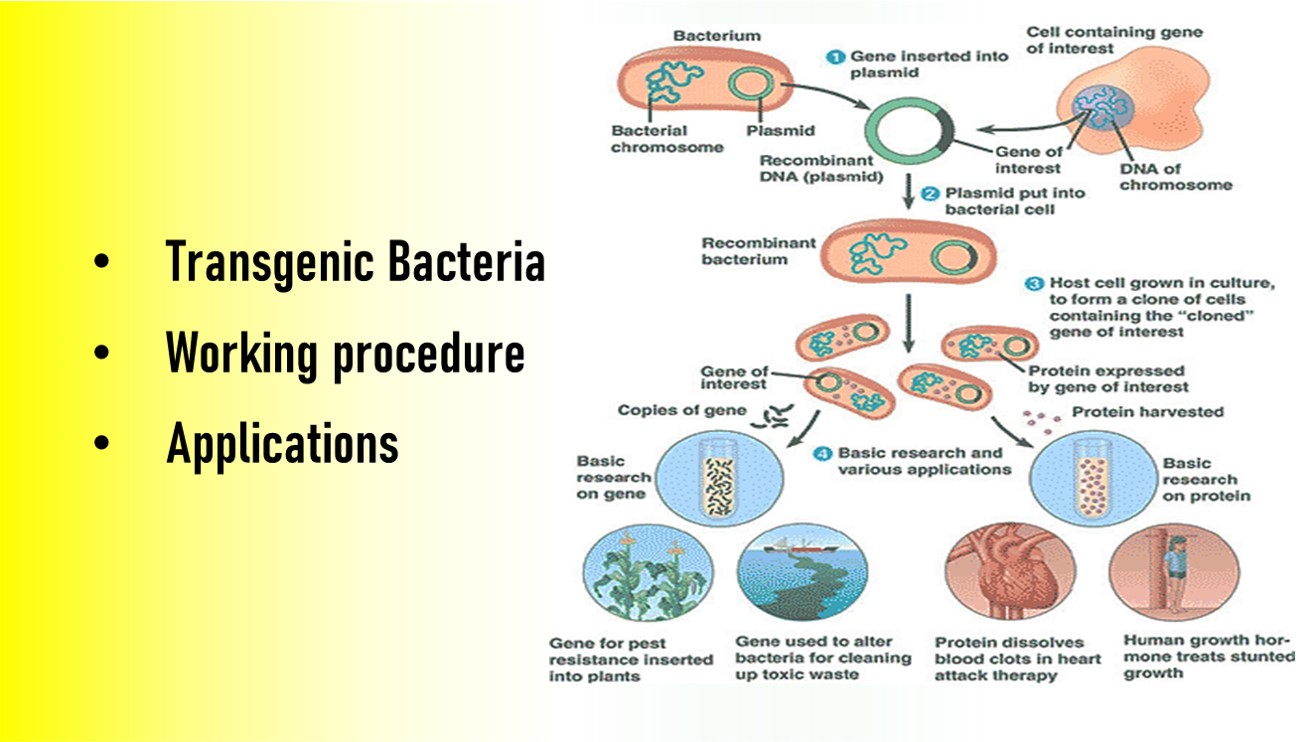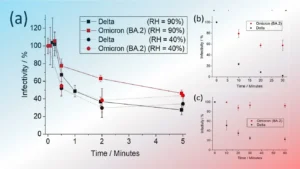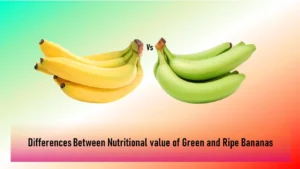What are Transgenic Bacteria?
Transgenic bacteria are those bacteria that contain genes from other species. They are genetically modified microorganisms (GMOs) that have been developed through engineering of the genome.
Transgenic bacteria are widely used in agriculture, medicine, and biotechnology as well as to produce food additives, such as vitamins, enzymes, antibiotics, and hormones.
In 1973, scientists Herbert Boyer and Stanley Cohen created the first genetically engineered organism – E. coli bacteria that had the gene for resistance to the antibiotic tetracycline transferred into it.
Table of Contents
[show]
Procedure for Creating Transgenic Bacteria
- Take a bacterial plasmid.
- Cut out the portion of the gene of interest using a restriction enzyme.
- Same restriction enzyme is used to cut the bacterial plasmid.
- Use DNA Ligase to incorporate the desired portion of DNA into the plasmid. The incorporated portion is called a transgene.
- Use a vector which has a high multiplication rate to transport the transgene into the desired organism.
- The transgene replicates within the host cell or incorporates itself into the host DNA, and commands for the production of required protein synthesis.
Application of Transgenic Bacteria
Medicine
- Production of human insulin to treat diabetes. Before 1983, insulin was provided through animal resources that carried purified insulin similar to human insulin.
- The process was labour intensive, expensive and had side effects like allergic reactions.
- Other medicines produced by using transgenic bacteria include
- Clotting factors to treat haemophilia,
- Human growth hormone to treat various forms of dwarfism,
- Interferon to treat some cancers,
- Erythropoietin for anaemic patients, and
- Tissue plasminogen activator which dissolves blood clots.
Environment
- For bioremediation (where the bacteria are used to convert pollutants into a less toxic
- form).
- Transgenic bacteria have also been developed to leach copper from ore, clean up mercury pollution and detect arsenic in drinking water.
- They are used as biofilters in industries and can remove sulphur from coal before burning it.
- For cleaning up of oil spills by digesting hydrocarbons of crude oil.
Agriculture
- To increase crop production or to allow crops to be grown outside their original habitat.
- Application of Bacillus thuringiensis (Bt) and other bacteria can help protect crops from
- insect infestation and plant diseases.
- To increase environmental protection through reduced use of pesticides.
- To improve nutrition for people.
- Increase farm profitability through reduced cost and new product opportunities.
- Anti-freezing bacteria is sprayed onto the plants to prevent ice formation.
- Herbicides will have no effect on the transgenic crop plants and only destroy the weeds.
- Allow for crops to have a higher self-life.
Mining
- To extract copper, uranium, and gold from low-grade sources.
- To improve the bioleaching capabilities of metals.
Industry
- Genetically modified bacteria are used to produce large amounts of proteins for industrial use.
Food
- Food products from genetically modified bacteria include alpha-amylase, which converts starch to simple sugars, chymosin, which clots milk protein for cheese making, and pectinesterase, which improves fruit juice clarity.
Ethical Issues and Concerns
- Safety Concerns: Little is known about the adaptation potential of the Transgenic Bacteria.
- Natural VS Unnatural: Genetic Engineering causes modifications that are not naturally possible in nature. There are unknown consequences to altering the natural state of an organism through foreign gene expression.
- Legitimacy: It is impossible to determine consequences linked to new scientific knowledge which could be harmful to the planet.
- Health risks: Potential health risks to humans include the possibility of exposure to new allergens in genetically modified foods, as well as the transfer of antibiotic-resistant genes to gut flora.
- Patent: The modification/usage of living organisms for public services (as food and medicine sources, for example) has also created problems with patents granted for the same.
Also Read:
What is Recombinant DNA Technology ? Applications of rDNA Technology
Applications of Nanomaterials in Medical and Healthcare industries












1 thought on “What is Transgenic Bacteria and its applications?”